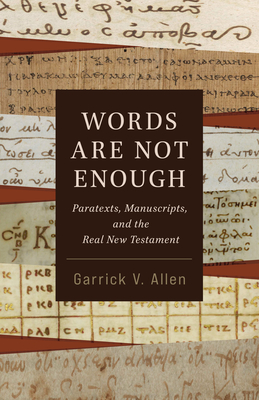
Allen, Garrick V.
product information
description
ript history of the New Testament, encompassing its paratexts--titles, cross-references, prefaces, marginalia, and more. How did the Christian scriptures come to be? In Words Are Not Enough, Garrick V. Allen argues that our exploration of the New Testament's origins must take account of more than just the text on the page. Where did the titles, verses, and chapters come from? Why do these extras, the paratexts, matter? Allen traces the manuscript history of scripture from our earliest extant texts through the Middle Ages to illuminate the origins of the printed Bibles we have today. Allen's research encompasses formatting, titles, prefaces, subscriptions, cross-references, marginalia, and illustrations. Along the way, he explains how anonymous scribes and scholars contributed to our framing--and thereby our understanding--of the New Testament. But Allen does not narrate this history to try to unearth a pristine authorial text. Instead, he argues that this process of change is itself sacred. On the handwritten page, scripture and tradition meet. Students, scholars, and any curious reader will learn how the messy, human transmission of the sacred text can enrich our biblical interpretation.
member goods
No member items were found under this heading.
listens & views

LIVE AT DIZZY'S CLUB COCA-COLA ...
by PARSON,DION AND 21ST CENTURY BAND
COMPACT DISCout of stock
$14.75
Return Policy
All sales are final
Shipping
No special shipping considerations available.
Shipping fees determined at checkout.






